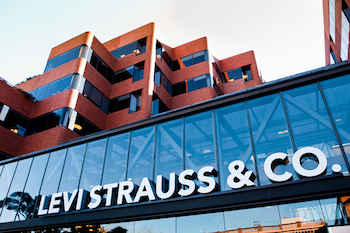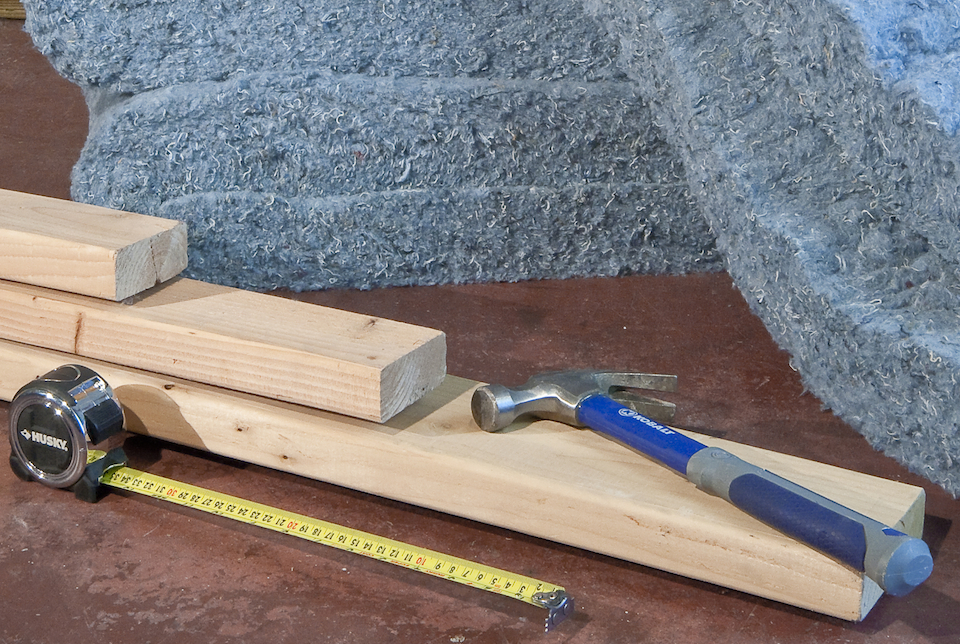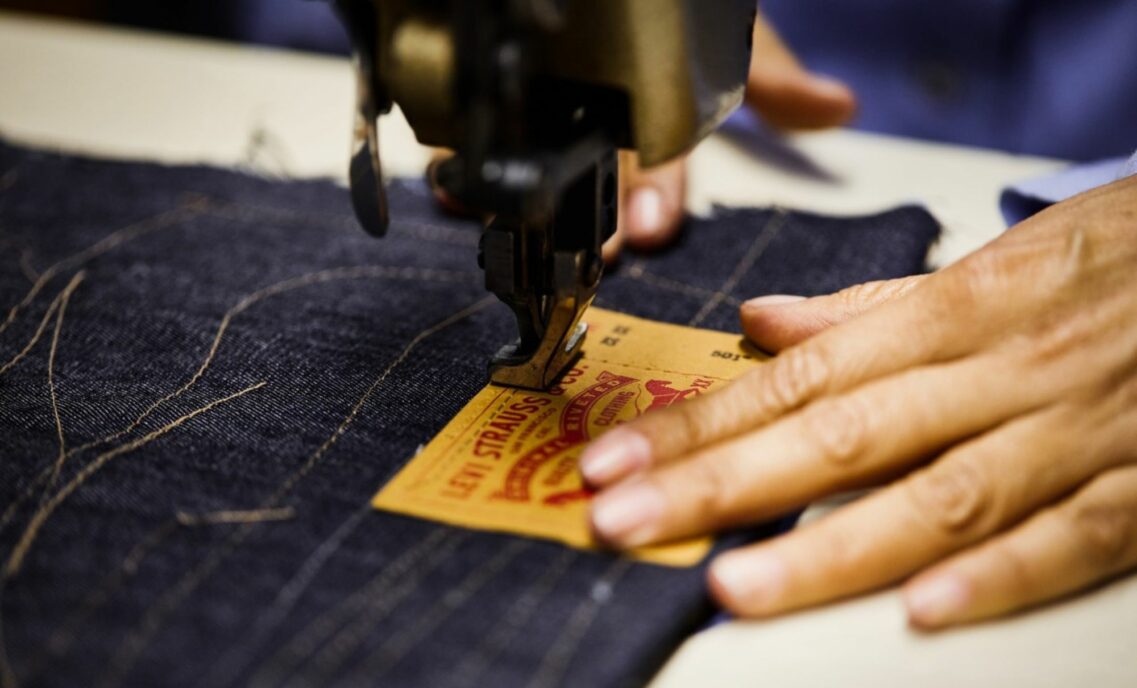We all know that our jeans can keep us warm. It turns out, they can do so in more ways than one.
When LS&Co. began an ambitious remodel of our San Francisco offices, we were committed to using denim insulation in construction, and we turned to Bonded Logic to help. In partnership with Phoenix Fibers and United Fibers, Bonded Logic has been recycling our jeans since 2002. Senior Brand and Product Management Executive Sean Desmond says, “To manufacture a sustainable product has been our mission from day one.”
Mission accomplished. Made from 80 percent recycled cotton fibers, denim insulation has the highest recycled content of any batt insulation on the market. (Batt insulation comes in pre-cut panels and is used to insulate floors, walls and ceilings.) It also does not contain chemicals and irritants that other insulations contain. And beyond being “green” and healthy, denim offers many key advantages for insulating, from being plentiful, cost-effective and durable, to offering superior soundproofing ability.

The amount of denim insulation in our San Francisco headquarters equals approximately 25,500 pairs of jeans.
So how does a pair of jeans become insulation? First, United Fibers sources discarded denim through a variety of channels, from wholesale purchase programs through nonprofit organizations such as Goodwill, to acquiring shipments of counterfeit Levi’s® jeans arriving from Asia. The total number of jeans the firm recycles has grown every year.
These salvaged jeans then go to Phoenix Fibers, which converts the denim back to fiber form. In the first step of the assembly line process, jeans are chopped up into small pieces. Then, metal details (zippers, rivets, etc.) are removed, either by a very powerful magnet or, in a process unique to Phoenix Fibers, by being shot out of the assembly line by metal detectors and air jets. The remaining pure denim scraps are sent through a series of rotating cylinders and shredded. What was once a pair of jeans now resembles a pile of blue cotton candy.
This reclaimed fiber then ships to Bonded Logic to be turned into insulation. First, it is treated it with an anti-flammability solution. Then, it’s blended with a binder material and solidified into a solid chunk. And voila! Rather than winding up in a landfill, the old Levi’s® (and, yes, other blue jeans) are primed for a new life as denim insulation, available at major retailers across the country.
This eco-friendly product not only extends the life cycles of our blue jeans and reduces waste — it has some other advantages as well. Denim insulation’s ability to absorb sound is about 35 percent greater than traditional insulation. As a result, you’ll find it in Bosch dishwashers, the walls of movie theaters and the Los Angeles Staples Center.
It’s also non-toxic. Fiberglass insulations contain irritants and users need to wear protective clothing during installation. When working with denim insulation, users can wear a T-shirt … and a pair of Levi’s® jeans. Or Dockers® khakis.
But Desmond says most customers choose denim insulation for the product’s sustainable nature. And producing environmentally friendly products is a labor of love that Bonded Logic plans to continue. “We like to think that we’re a pretty innovative group of people. We do things differently here.” Those are words that all of us at LS&Co. can relate to.
So while we’ve all said goodbye to a well-loved pair of Levi’s® jeans, we can take solace in the fact that our discarded denim might still surround us. The next time you decide to tackle a home improvement project, you may want to consider giving old blue jeans new life by choosing denim insulation.







